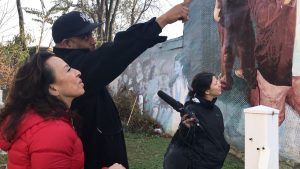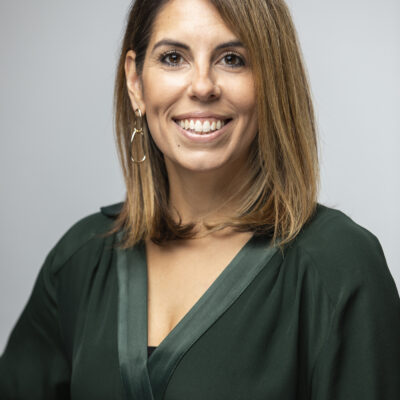
The Heising-Simons Foundation, a member of MIF since 2016, is a family foundation based in Los Altos and San Francisco, Calif. Awarding more than $900 million since making its first grant in 2007, the foundation focuses on five program areas—Education, Climate & Clean Energy, Human Rights, Science, and Community and Opportunity. With a history of funding media relating to its programmatic priorities, the foundation took a step further by creating a journalism portfolio within the Community and Opportunity program area—managed by Brian Eule, the foundation’s director of Journalism and Communications. In this Q&A, Brian shares details about the foundation’s thinking around media strategy, why we need to sustain the field of freelance journalism and the critical need to elevate ignored voices, and more.
Nina Sachdev, Communications Director, Media Impact Funders: Heising-Simons has a dedicated journalism portfolio, which is somewhat of a unicorn in media philanthropy, as most funders are supporting media through their issue area. What’s the origin story of the foundation creating such a portfolio? What was the thinking back then?
Brian Eule, Director of Journalism and Communications, Heising-Simons Foundation: Democratic societies require an active press as a means of ensuring accountability and as a means of keeping an informed citizenry. And yet, in 2016, we found ourselves in a time in which journalism seemed especially vulnerable. Journalists were called the opposition and targeted to sow mistrust among the public, there was a noticeable trend among audiences to seek news that only reaffirmed their own beliefs, and all this was occurring as journalism institutions had dwindling resources, and, worse yet, as so many parts of the nation found themselves with more news deserts. The Foundation already had a tradition of making grants to media organizations working on issues related to our program areas, as a means of achieving better information and public understanding of those topics. And we have a terrific Board that values journalism and its role in society. So we began to talk about the importance of supporting journalism as a field—through a small portfolio out of our emerging opportunities grantmaking. This meant, as my dear colleague Jon Funabiki often describes it, making grants for the media and not just through the media. We positioned the portfolio as one that would work to strengthen and sustain journalism as an essential arm of U.S. democracy.
Nina: How has your approach to media changed over time and what does it look like now?
Brian: Our approach is to support nonprofit journalism organizations and leaders across two focus areas: underrepresented groups and voices in media; and investigative journalism. It’s only been a few years, but I think one of the things we have seen over this period is the growth of the number of new nonprofit journalism organizations doing incredible work, and the number of amazing journalists creating new outlets or shows and reinventing the field. They are doing tremendous work, on small budgets, and there is enormous potential as more funders get involved. We’ve been excited to provide seed capital to several outlets and shows to help provide financial wiggle room, as they experiment and grow their journalism. One example that comes to mind is Translash Media. Likewise, our approach is to find great leaders, provide general support funding whenever possible, and let these great leaders flourish and take the world by storm. And if we can introduce them to other funders, all the better!
Nina: Tracie Powell of Pivot Fund—a Heising-Simons grantee partner—wrote recently that entrepreneurs are leading a “media revolution” in communities of color to fill a critical information gap in areas that have traditionally been ignored by legacy media. She also says these efforts are going ignored by national grantmakers and community foundations. As a funder committed to elevating underrepresented voices, what are your thoughts on how should philanthropy recalibrate?
Brian: Fund Tracie! (Ok, so that’s only one small thing they can do, but seriously, Tracie is a great example of the type of leader I was talking about above. We got to know her before she created the Pivot Fund, heard and believed in her vision, and thought highly of her leadership. The Pivot Fund is already proving itself as something special.) But she’s so right. Philanthropy has, as one friend points out, very few natural enemies. There’s seldom a field that can try to take risks and experiment as much as ours. And yet, so many of us are afraid to because we’re worried about failure. We always asking, “who else is funding this project?” But that’s the wrong way of thinking about it. Instead, philanthropic dollars can give journalism organizations that don’t have money the capital to give it a go. It can give upstart journalists the opportunity to prove themselves. It can change the journalism field—and, most importantly, who is part of it, who is represented. And it can do that with just a drop in the bucket of funds provided by philanthropy to so many other fields.
Nina: Freelance journalists—one area of focus of the foundation’s media grantmaking—aren’t constrained by the structures and gatekeeping practices of traditional newsrooms. But they face plenty of challenges, too. When you think about the importance of supporting freelance journalism, what key themes stand out? Is there more to be done in philanthropy to support this component of the media ecosystem?
Brian: In today’s journalism, freelancers are both vulnerable and valuable. With trimming of newsroom staff, many journalists are working without the support of an institution and with limited resources. They have no office manager assisting them. They have no in-house legal team. They have no work-supplied health insurance or retirement plan. And yet, some of the most important pieces of journalism come from these freelance journalists who commit months and even years to their work. They are working on their passion projects, and we need them, their time, and energy. Philanthropy can play a role providing them financial support for their projects, but it can also help by connecting them to a support network and showcasing them to editors and media outlets that would be lucky to feature their work. In the weeks after Ryan Christopher Jones won the American Mosaic Journalism Prize, he was contacted by National Geographic, the New Yorker, and asked to serve as a Pulitzer Prize juror. Another one of our winners, Rebecca Nagle, received help from one of our long-time judges on her book proposal, who introduced her to her eventual literary agent.
Nina: What are your favorite examples of impact stemming from the foundation’s journalism portfolio’s two focus areas—Underrepresented Groups and Voices in Media, and Investigative Journalism?
Brian: Well, those two stories about the Prize recipients are certainly among them. I love that Prize because it does a few things: first, the fact that it is the largest dollar amount journalism prize in the country and is specifically for journalism about underrepresented and/or misrepresented groups in the present American landscape—that says something to the field. That says, this type of journalism is critical. And second, because it can be life-changing for the hard-working recipients. One day they might feel completely on their own. The next day, they learn that a group of leaders in journalism believe in them and their work, and they have a $100,000 check to pay off debts, take care of themselves, and continue this critical work.

Beyond the Mosaic Prize, two other recent stories of impact come to mind. First, when ProPublica’s incredible investigative journalists shared audio from US customs and border protection, where children had been separated from their parents. That audio changed the conversation. As ProPublica notes, within 48 hours, President Trump reversed his policy of separating children from their parents. And within a month, the child in the recording was reunited with her mother. Second, I think of Futuro Media and its podcast Suave. There are few media organizations out there as special as Futuro. This group is restless and relentless, constantly trying new things, and always producing incredible quality. Suave was a passion project for them, one they had been working on for years, and one that almost didn’t have the funding it needed. When it made it to the finish line, it won the Pulitzer Prize for a powerful story about a system that sentences juveniles to life in prison, and a story of incarceration and redemption.
Nina: What insight or advice would you offer a funder who may be interested in making media and journalism grants?
Brian: I think, whatever you care about, whatever critical issues you are working on, it’s going to be impacted by the future of journalism in this country. Journalism touches everything. And right now, with so many new experiments and so much talent out there, a little money can go a long way. I would say that journalism funding should be part of the conversation of any organizations working on societal changes, be it social or environmental. And I would say, email me! I love talking about this and would have many, many recommendations of great journalists who need support!
Brian Eule is the Director of Journalism and Communications for the Heising-Simons Foundation and a member of Media Impact Funders’ Program & Communications Committee. Email him at beule [at] hsfoundation.org.
